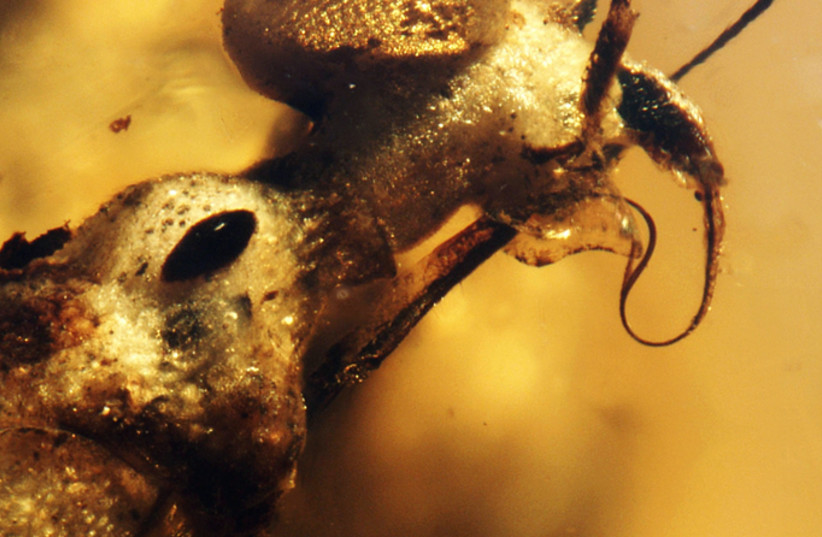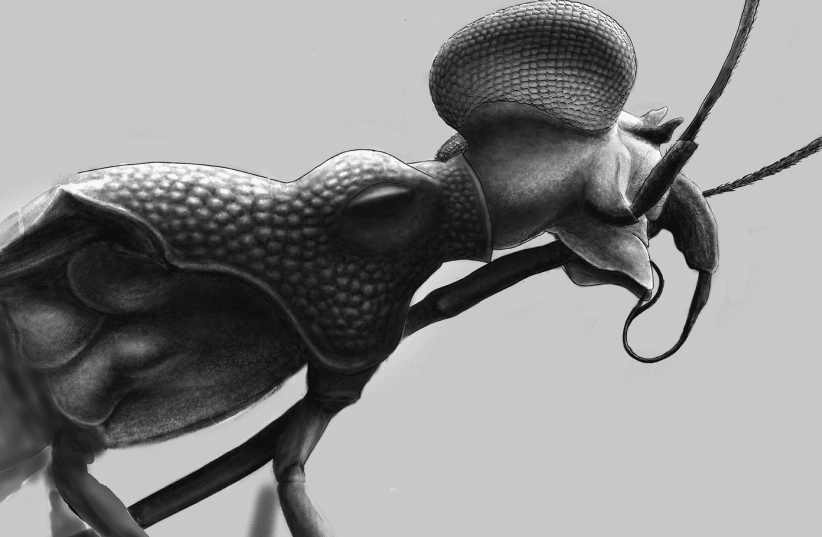
Scientists discover 99 million-year-old bedbug hidden in amber
Scientists at the Hebrew University of Jerusalem (HU) found bedbug in amber from Myanmar. It was determined that the bedbug is 99 million years old.
Bedbugs are small insects that feed on human blood and usually live in areas such as beds, furniture and carpets. their size varies between 1 and 7 millimeters. They have an oval shape and a brown color.
The bedbug hidden in amber was first identified by Dolev Fabricant of the Alexander Silberman Institute for Life Sciences and Dr. Tanya (Tatiana) Novoselski, director of the insect collection at the Steinhardt Nature Museum at Tel Aviv University (TAU).

The discovered insect has unique colors and shapes compared to modern species, which they believe were used as a deterrent against predators.
The insect was found to have retained its colors. Old beetles preserved in amber are usually yellowish brown, pale and uniform in color, while sharp and clear colors are rarer. The name for the insect that expresses its color is Miropictopallium coloradmonens (painted cape).
Study has just been published in the Israel Journal of Entomology under the title “A peculiar large-eyed aposematic bug Miropictopallium coloradmonens from mid-Cretaceous Kachin amber.”

“The newly discovered insect contributes to the understanding of the world today because it adds knowledge about an important turning point in the history of life on land,” said Fabricant, an HU graduate student. “The period of its origin is characterized by an unprecedented biological diversity and the beginning of the formation of modern ecosystems in their composition.”
The amber in which the new insect was discovered came to the researchers as part of an auction.
Novoselski, director of the bedbug collection at the Steinhardt Museum, announced that the museum has discovered a new insect that is “fascinating”. The discovery sheds light on the evolution of bedbugs and offers new insights into the diversity of life in the mid-Cretaceous Period. Novoselski underlines the importance of amber fossils for paleontological research, given the diversity and development of insects during this period.
Cover Photo: Dolev Fabricant
You may also like
- A 1700-year-old statue of Pan unearthed during the excavations at Polyeuktos in İstanbul
- The granary was found in the ancient city of Sebaste, founded by the first Roman emperor Augustus
- Donalar Kale Kapı Rock Tomb or Donalar Rock Tomb
- Theater emerges as works continue in ancient city of Perinthos
- Urartian King Argishti’s bronze shield revealed the name of an unknown country
- The religious center of Lycia, the ancient city of Letoon
- Who were the Luwians?
- A new study brings a fresh perspective on the Anatolian origin of the Indo-European languages
- Perhaps the oldest thermal treatment center in the world, which has been in continuous use for 2000 years -Basilica Therma Roman Bath or King’s Daughter-
- The largest synagogue of the ancient world, located in the ancient city of Sardis, is being restored











Leave a Reply